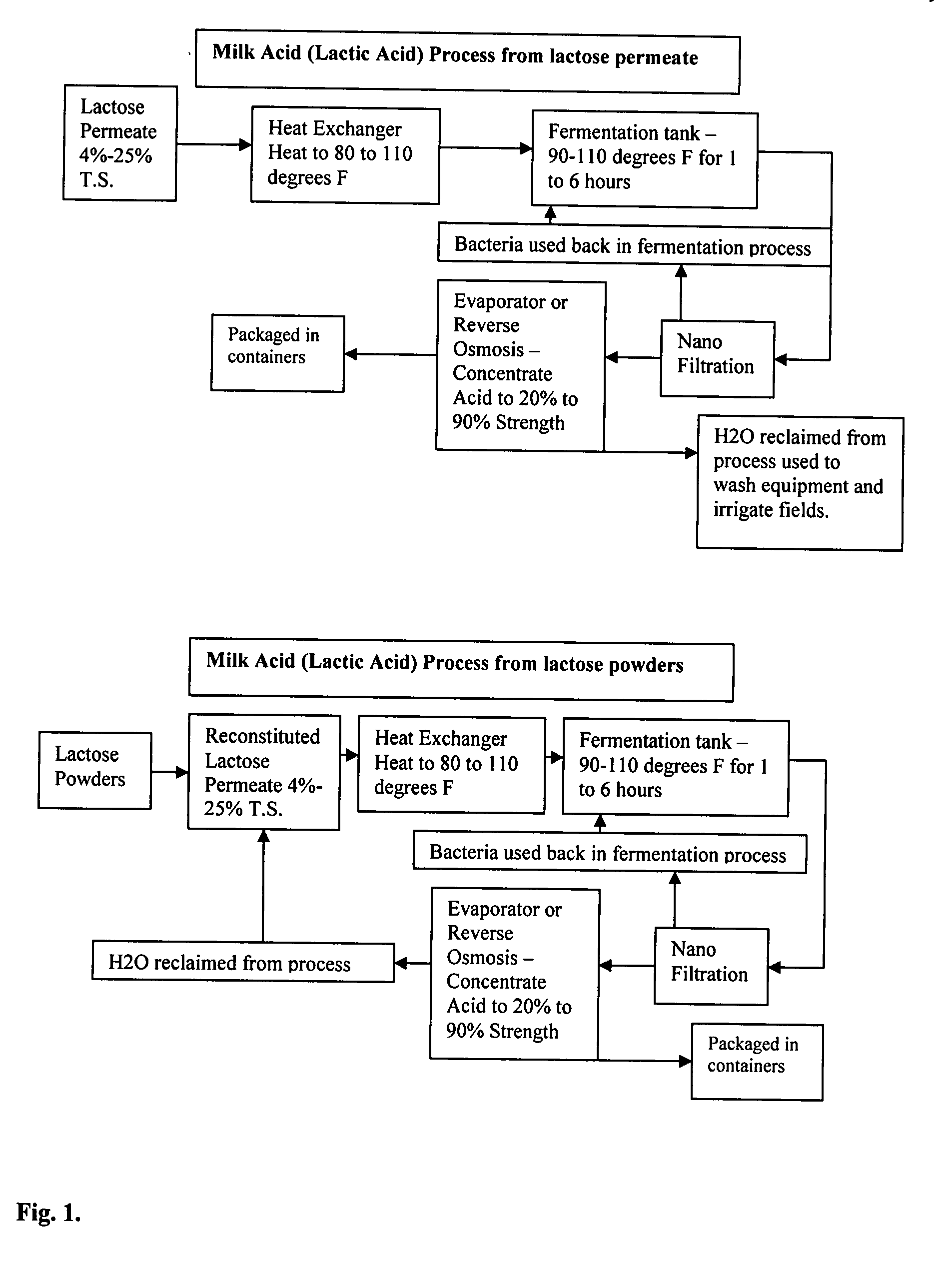Novel manufacturing process for milk acid
a manufacturing process and technology of milk acid, applied in the field of milk acid manufacturing process, can solve the problems of not being widely recovered, earth's surface, environmental problems,
- Summary
- Abstract
- Description
- Claims
- Application Information
AI Technical Summary
Benefits of technology
Problems solved by technology
Method used
Image
Examples
example 1
[0016]In an embodiment of the invention, UF-permeate of skim milk at 45-50 C was passed through a nan-ofiltration module to remove 50% of the minerals present in the UF permeate along with 75% water. The NF retentate contains 15-19% lactose on weight by volume basis. After getting the desired concentration of lactose in NF retentate, it was inoculated with direct vat type of a mixed culture containing Lactobacillus bulgaricus and Streptococcus thermophilus. Once lactic acid started accumulating, the nanofiltration process was started again confirmed by measuring pH of the retentate. The permeate containing 0.8-1.2% lactic acid was concentrated by evaporation to 50-90% strength of acid
Lactic Acid Manufacture Process from Lactose Permeate
[0017]Lactose (molecular weight=342) was converted into lactic acid (molecular weight=90) by fermentation of UF-milk permeate or cheese whey. 1 molecule of lactose should gives at-least two molecules of lactic acid.
example 2
[0018]Process from UF-Permeate[0019]1. UF-permeate (5% lactose) in a silo / fermentor (with special agitators)[0020]2. Warmed to 38-40° C.[0021]3. Added bacterial culture containing Lactobacillus bulgaricus (90 g / L) and Streptococcus thermophilus and Lactococus lactis sub cremoris in order to get fast fermentation (3-4 hours) in the silo.[0022]4. After 1 hour inoculation with bacterial culture started nano-filtration (NF) of the mixture in silo.[0023]5. The lactic acid produced in the process was be removed in the permeate of NF which will prevent the killing of bacterial cultures and therefore, cultures continued to produce lactic acid from lactose at a constant rate.[0024]6. The retentate of NF— was a bacterial culture which can be re-used and will make the process economical.[0025]7. The permeate of NF was dilute solution of lactic acid.[0026]8. The dilute lactic acid solution was concentrated by reverse osmosis, evaporation, distillation or by centrifugation, to any desired streng...
PUM
| Property | Measurement | Unit |
|---|---|---|
| concentration | aaaaa | aaaaa |
| temperature | aaaaa | aaaaa |
| optically active | aaaaa | aaaaa |
Abstract
Description
Claims
Application Information
 Login to View More
Login to View More - R&D
- Intellectual Property
- Life Sciences
- Materials
- Tech Scout
- Unparalleled Data Quality
- Higher Quality Content
- 60% Fewer Hallucinations
Browse by: Latest US Patents, China's latest patents, Technical Efficacy Thesaurus, Application Domain, Technology Topic, Popular Technical Reports.
© 2025 PatSnap. All rights reserved.Legal|Privacy policy|Modern Slavery Act Transparency Statement|Sitemap|About US| Contact US: help@patsnap.com


